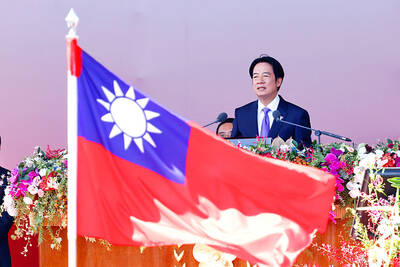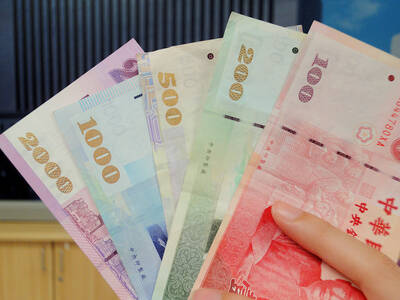The US government has cleared the way to ship out US$125 billion this week to the country’s largest banks, beginning the biggest government bailout in history.
“The money will go out the door for those institutions early this week,” said Assistant Treasury Secretary David Nason, one of the chief architects of the rescue plan.
Not only is the money ready to be sent to nine major financial institutions, including Bank of America, Citigroup Inc and JPMorgan Chase, but the government is reaching preliminary agreements with a group of more than a dozen major regional banks that will share a part of an additional US$125 billion the government hopes to pump into the banking system.
Before the end of the year, Treasury Secretary Henry Paulson intends to have spent US$250 billion of the US$700 billion bailout package buying ownership stakes in US banks. The goal is to improve their balance sheets so that they will resume more normal lending practices and prevent the country from sliding into a deep recession.
Another US$100 billion is earmarked to be spent buying troubled assets from banks — such as bad mortgage loans — as another way to spur banks to resume lending.
However, a long line of other industries is hoping the government will decide to help them as well. Insurance companies, automakers, hedge funds and foreign-owned banks are all making appeals to be included in the rescue package, contending that they need assistance as well.
Treasury and White House officials signaled on Monday that their cases were being reviewed. That review is coming in the closing days of a heated election campaign when the country will be electing a new president and a new Congress for next year.
The Federal Reserve began a program on Monday to purchase the short-term debt of businesses, known as commercial paper.
This market has been frozen since the collapse of Lehman Brothers spooked credit markets last month.
Fed officials were also scheduled to begin a two-day meeting on interest rates yesterday, with economists widely forecasting that the Fed will cut a key interest, the federal funds rate, to 1 percent in an effort to boost borrowing demand as a way to deal with the economy’s current troubles.
So far, the efforts to battle the severe credit squeeze have shown few results. Libor, the London Interbank Offered Rate, a key goalpost for international lending, edged down only marginally on Monday and still remains at elevated levels.
“All these efforts are doing some good, but the question is whether they will do enough,” said David Wyss, chief economist for Standard & Poor’s in New York. “The credit markets are still pretty locked up.”

People can preregister to receive their NT$10,000 (US$325) cash distributed from the central government on Nov. 5 after President William Lai (賴清德) yesterday signed the Special Budget for Strengthening Economic, Social and National Security Resilience, the Executive Yuan told a news conference last night. The special budget, passed by the Legislative Yuan on Friday last week with a cash handout budget of NT$236 billion, was officially submitted to the Executive Yuan and the Presidential Office yesterday afternoon. People can register through the official Web site at https://10000.gov.tw to have the funds deposited into their bank accounts, withdraw the funds at automated teller

PEACE AND STABILITY: Maintaining the cross-strait ‘status quo’ has long been the government’s position, the Ministry of Foreign Affairs said Taiwan is committed to maintaining the cross-strait “status quo” and seeks no escalation of tensions, the Ministry of Foreign Affairs (MOFA) said yesterday, rebutting a Time magazine opinion piece that described President William Lai (賴清德) as a “reckless leader.” The article, titled “The US Must Beware of Taiwan’s Reckless Leader,” was written by Lyle Goldstein, director of the Asia Program at the Washington-based Defense Priorities think tank. Goldstein wrote that Taiwan is “the world’s most dangerous flashpoint” amid ongoing conflicts in the Middle East and Russia’s invasion of Ukraine. He said that the situation in the Taiwan Strait has become less stable

CONCESSION: A Shin Kong official said that the firm was ‘willing to contribute’ to the nation, as the move would enable Nvidia Crop to build its headquarters in Taiwan Shin Kong Life Insurance Co (新光人壽) yesterday said it would relinquish land-use rights, or known as surface rights, for two plots in Taipei’s Beitou District (北投), paving the way for Nvidia Corp to expand its office footprint in Taiwan. The insurer said it made the decision “in the interest of the nation’s greater good” and would not seek compensation from taxpayers for potential future losses, calling the move a gesture to resolve a months-long impasse among the insurer, the Taipei City Government and the US chip giant. “The decision was made on the condition that the Taipei City Government reimburses the related

FRESH LOOK: A committee would gather expert and public input on the themes and visual motifs that would appear on the notes, the central bank governor said The central bank has launched a comprehensive redesign of New Taiwan dollar banknotes to enhance anti-counterfeiting measures, improve accessibility and align the bills with global sustainability standards, Governor Yang Chin-long (楊金龍) told a meeting of the legislature’s Finance Committee yesterday. The overhaul would affect all five denominations — NT$100, NT$200, NT$500, NT$1,000 and NT$2,000 notes — but not coins, Yang said. It would be the first major update to the banknotes in 24 years, as the current series, introduced in 2001, has remained in circulation amid rapid advances in printing technology and security standards. “Updating the notes is essential to safeguard the integrity